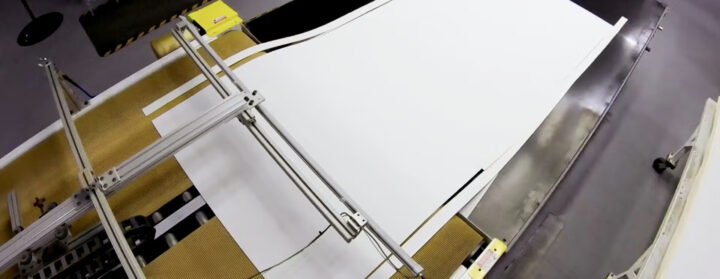From Medical Devices To Consumer Goods: How Thermoplastics Revolutionized Product Design
The world of product design has been forever transformed by an incredible innovation – thermoplastics. These versatile materials have enabled us to create everything from medical devices to consumer goods with ease, efficiency, and affordability. We will examine some of the most exciting developments in thermoplastics in this blog post. Get ready to be amazed at just how much impact these tiny plastic pellets can have on our lives!

Introduction To Thermoplastics
Unlike thermosetting plastics, thermoplastics are a type of plastic that can be melted and reformed. Thermoplastics are used in a wide range of products, from medical devices to consumer goods.
There are two main types of thermoplastics that companies like this thermoplastic supplier might use: commodity plastics and engineering plastics. Commodity plastics are the most common type of thermoplastic. They are made from petroleum and natural gas. Engineering plastics are made from synthetic polymers such as polystyrene and nylon.
Thermoplastics can be either crystalline or amorphous. Crystalline thermoplastics have a regular, repeating structure that gives them greater strength and rigidity. Amorphous thermoplastics do not have a regular structure, so they are more flexible and easier to mold.
The properties of thermoplastics can be customized by adding different chemicals during the manufacturing process. For example, plasticizers can be added to make the material softer and more pliable. Fillers can be added to increase the strength or stiffness of the material. And colorants can be added to give the plastic a desired color or appearance
Benefits Of Using Thermoplastics In Manufacturing
The use of thermoplastics in manufacturing has revolutionized the product design industry, offering multiple benefits such as versatility, durability, and cost-effectiveness. One of the key advantages of thermoplastics is their ability to be molded into complex geometric shapes with varying thicknesses and textures using injection molding techniques. This flexibility allows product designers to create intricate designs that were once impossible to achieve with traditional materials.
In addition, thermoplastics are lightweight yet strong and durable, making them ideal for building products that require high strength-to-weight ratios. Furthermore, they are resistant to heat, chemicals and UV light which makes them a suitable choice for various industrial applications including automotive parts or electronic goods.
Another significant advantage of using thermoplastics is their environmental sustainability compared to other common plastics like PVC or PET. They can be easily recycled without compromising their quality or mechanical properties, becoming a more efficient solution than other plastic types.
The Impact Of Thermoplastics On Product Design
In the last few decades, thermoplastics have had a profound impact on product design. Thermoplastics are versatile, durable, and relatively easy to work with, making them ideal for a wide range of applications. From medical devices to consumer goods, thermoplastics have transformed the way we design and manufacture products.
Thermoplastics are particularly well-suited for medical applications. They can be sterilized and are often used in disposable medical devices such as syringes and IV bags. Thermoplastics are also biocompatible, meaning they won’t trigger an immune response in the body. This makes them ideal for implantable medical devices such as artificial hips and pacemakers.
Thermoplastics have also changed the way we design consumer products. Many everyday items such as bottles, toys, and packaging are now made from thermoplastics. Thermoplastics can be molded into complex shapes and are often used in place of traditional materials like metal or glass. They’re also lightweight and cost-effective, making them ideal for mass production.
Applications Of Thermoplastics In Other Industries
Thermoplastics are used in a wide variety of industries outside of the medical and consumer goods sectors. One common application is in the automotive industry, where thermoplastics are used to create car parts such as dashboards, door panels, and headlight housings.
Thermoplastics are also frequently used in the construction industry, particularly in the fabrication of pipes and fittings. They are often chosen for their resistance to corrosion and their ability to withstand high temperatures.
Other industries that use thermoplastics include the aerospace, electrical, and electronics industries. Thermoplastics are used to create airplane parts, insulation for wiring, and enclosures for electronic components.
Environmental Issues With Thermoplastics
In recent years, there has been increasing concern over the environmental impacts of thermoplastics. Thermoplastics are made from non-renewable fossil fuels, and when they are incinerated, they release harmful chemicals into the atmosphere.
Thermoplastics are also a major source of plastic pollution. A large percentage of the plastic waste that ends up in our oceans and landfills is thermoplastics. This pollution can have negative impacts on wildlife, and it can also leach chemicals into the soil and water.
There are a number of ways to reduce the environmental impacts of thermoplastics. Biodegradable and compostable options are available, and people should be encouraged to recycle them. Increasing energy efficiency in manufacturing and using less plastic overall are other important steps that need to be taken.
Emerging Trends In The Use of Thermoplastics
Advances in medical device design and the increasing popularity of 3D printing have led to a resurgence in the use of thermoplastics. Lightweight, flexible, and corrosion-resistant, these materials offer many advantages over traditional metals.
One of the most popular emerging trends in the use of thermoplastics is the development of so-called “smart” plastics. These materials can be programmed to change their properties in response to specific stimuli, such as heat or pressure. This makes them ideal for use in a variety of applications, including biomedical devices and consumer goods.
Another trend that is gaining traction is the use of recycled or bio-based thermoplastics. These materials offer a more sustainable alternative to traditional petroleum-based plastics, and can help to reduce the environmental impact of product manufacturing.
Conclusion
Thermoplastics have revolutionized product design, from medical devices to consumer goods. By allowing for increased flexibility and durability, thermoplastics have enabled designs that were previously impossible using traditional materials like metals and glass. With the increasing affordability of thermoplastics, this trend is likely to continue well into the future with no signs of slowing down!


